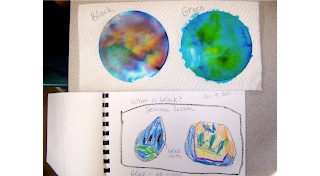Decomposing Pumpkins
My kids think I am nuts sometimes! As we were carving our pumpkins last week, I asked my kids what experiment they wanted to do this year. Ah mom, not again!
Yes again! Several years ago I wrote my first blog post all about how teachers can do real world science with pumpkins! You see, I think it is great that around this time of the year our kids get to count the seeds, see if a pumpkin will sink or float, as well as getting to go to the pumpkin patch. But come on! We can do some really cool experiments with pumpkins. Scientists don’t just count seeds or see if they float or sink. They do something!
In my quest to make this whole pumpkin topic a little more scientific, I began doing experiments with our pumpkins! This year the experiment is trying to answer the following question: Does location (sun or shade) make a difference with regard to rate of decomposition.
Before I tell you about the data I have collected so far, let’s go over the experimental design. The variable I am changing deals with location while the variable I am observing deals with rate of decomposition (with regards to the “things” I see on a day-to-day/weekly basis-like production of mold or presence of bugs). Constants: both pumpkins came from the same place; both pumpkins are about the same size; and both pumpkins have the tops on during the day.
So here are the results after 1 week. 
 The picture on the left is my son’s pumpkin which is in the sun for most of the afternoon. You can see the surface area is quite covered with mold already while my daughter’s pumpkin (in the shade) has very little. On day two, there were bugs in the candles-but not on the pumpkins. I am excited to see what next week brings!
The picture on the left is my son’s pumpkin which is in the sun for most of the afternoon. You can see the surface area is quite covered with mold already while my daughter’s pumpkin (in the shade) has very little. On day two, there were bugs in the candles-but not on the pumpkins. I am excited to see what next week brings!
Allowing children to make observations of pumpkins as they break down is a great way to engage them in the process of doing science. Designing the experiment is really about about coming up with a good variable to change!
So what experiment will you do this year? Here are some other ideas:
- Does coating the pumpkin with something make it decompose faster or slower (so think about varnish, hairspray)
- Does putting one pumpkin in the fridge at night slow down the decomposition process?
- Will a pumpkin plant grow if you put dirt inside of it?
If you have a teacher friend who might like to do this with their kids, check out the lesson I developed! Just click here to find it.
Have fun with those decomposing pumpkins this year!


























